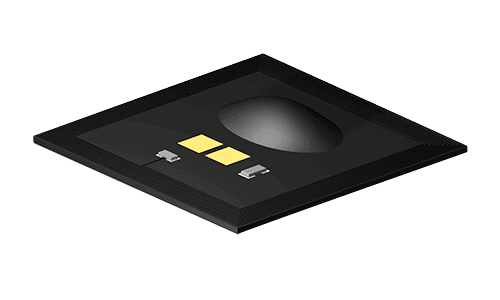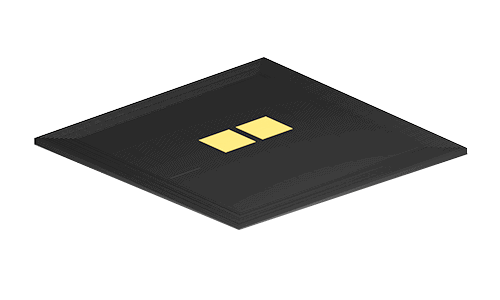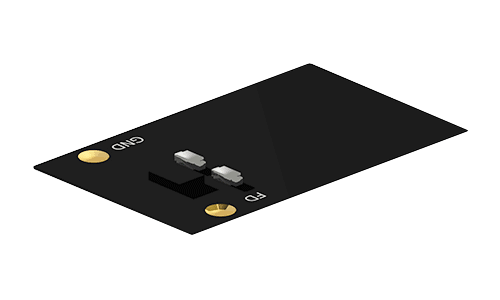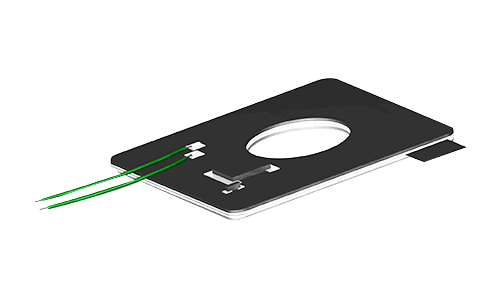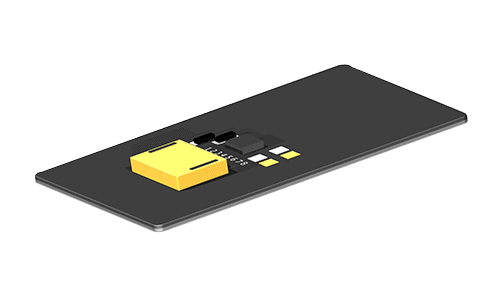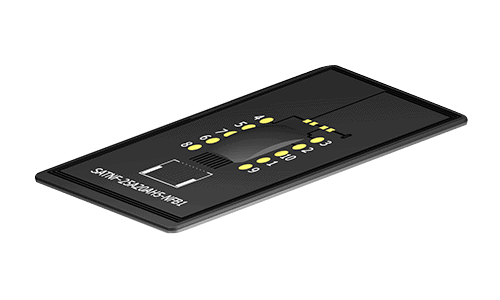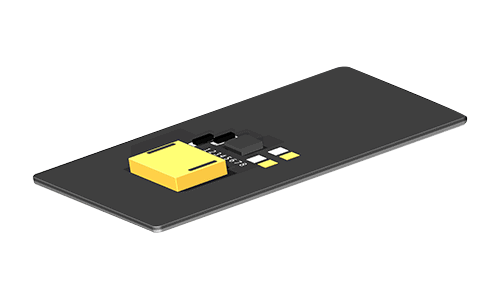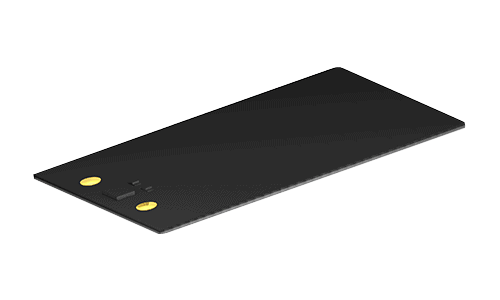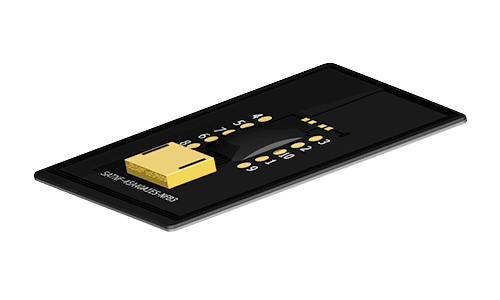Suntsu NFC Antennas offer stable and reliable near-field machine-to-machine communications and data transfer for NFC/RFID applications. We offer a wide range of Frequency bands in a variety of package sizes. All of our NFC chips are Halogen-Free ad RoHS compliant. Pick out a standard part number from the data sheets listed below or contact us to request any custom parameters or physical modifications that you may desire and we will design to your specific needs.
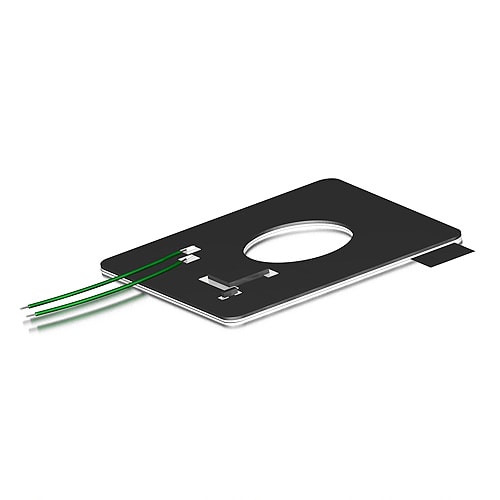
NFC Antennas
What is an NFC Antenna?
Near Field Communication (NFC) means an NFC antenna is ideal for two-way “read and write” communication that must be quick and accurate. NFC for smartphone applications enables cashless payments and the increasingly popular wallet functions. Our NFC antenna allows your devices or product tags to communicate with all NFC-enabled cellphones.
Technically an NFC antenna isn’t an antenna – it’s an induction loop. An induction loop for an NFC antenna is a coil of wire in a small volume of space. The NFC-enabled device can operate in either passive or active mode. Passive means an absence of power, and active refers to an electric current passing through the NFC antenna. NFC for iPhone can act passively or actively depending on the application. Most contactless card payment systems have an active NFC antenna in the reader, and the card has a passive NFC antenna.
NFC antenna inductance properties enable short-range communication by utilizing the magnetic field generated by an electric current. Current flowing through a wire coil creates a magnetic field around the coil. The magnetic field contains enough energy to power a nearby electric coil by inducing current flow in that coil. This property means you can use the NFC antenna phone signal to power a passive NFC antenna on a tag so you can read or download information. The devices or smart card and reader must be in close contact (within 10cm) because of the magnetic field’s limited range.
Applications of an NFC antenna
The applications of NFC antenna split into three significant areas:
- Data sharing of information and pictures
- Connecting or pairing without passwords
- Making payments without PINs or signatures
The combination of NFC tag antenna design and NFC reader antenna design enables:
- Making payments using your bank or credit card with a tap instead of a PIN
- Using your mobile phone as a payment device for purchases and travel
- Travel cards for commuting on buses and trains
- Identity documents and key cards for work security and access
- Sharing images and information between devices
- Pairing devices and storing passwords
- Medical monitoring and data sharing
- Information points accessible by mobile devices at tourist sites
The Difference between RFID, QR-Codes, and NFC
Both wireless technologies use radio signals for tracking and tagging, plus increasingly replacing bar codes as product identifiers.
QR-Codes: QR codes are a quick and economical way of providing additional information to smartphone users. They save time and energy but are only an updated barcode. Using a Q-code requires more effort from the customer – they need to have the right App, use their camera, have enough light, and angle the phone just right to capture the information. NFC is more convenient, faster, and does everything QR-code can do with added features unique to NFC.
RFID: RFID is Radio frequency identification, and NFC is Near Field Communication. The RFID tag has an antenna and a memory chip to store the associated data. If you have a reader, you can access the information on the memory chip. For most people, their smartphone is an all-purpose reader. RFID works across several feet, but it can only do one thing – show you the data on the memory chip.
NFC: NFC is a newer technology and a bit more complex as it gives you two-way communication, but it only works within a 10cm range.
Determining the Equivalent Inductance of an NFC Antenna
Inductance impacts the sensitivity and range of an NFC antenna. The calculation of inductance involves:
- A number of turns in the spiral
- Outline dimensions
- Copper track thickness
- Width and spacing of the copper track
The antenna induces an equivalent electrical current because of its magnetic field. The inductance is the primary factor in creating a circuit resonating at 13.56MHz and ensuring compatibility with other devices. The inductance is proportional to the number of turns (squared) multiplied by the turn exponent. The turn exponent is a maximum of 2 for printed antennas but more typically 1.7 or 1.8. The inductance is the only parameter that you can fine-tune using the antenna’s dimensions, material, and design to produce an NFC antenna that operates to a known frequency (13.36MHz).
Setting Up Your NFC Antenna
The reliability and the operating range of an NFC-enabled device or card depend on the NFC antenna design.
The NFC antenna’s geometry or size defines the operating distance, and generally, greater size equals greater distance. Mounting the NFC antenna on or around metal interferes with its capacity to create a magnetic field. Hence, a ferrite layer is often helpful for shielding when you need to apply an external NFC antenna to a metal device as a product tag, for example.
The NFC-enabled device can be passive (like a travel card) or active with a power supply. You can call the passive device a tag and the active device a reader. A device like a smartphone can operate passively or actively. An NFC circuit on one of the two objects enables the transfer of information and enables simple actions. The NFC tag contains an embedded NFC integrated tag using an NFC antenna connector to link the NFC antenna to an amount of useable memory that defines information you can write to memory and information you can read from the tag. The integrated circuit covers communication protocols and actions. For example, a travel card needs to tell the NFC reader on the vehicle that the person holding it has enough money for the journey and reduces the pool of credit available on the card. The NFC circuit can carry out two simple actions, and the power for the circuit comes from the magnetic field generated by the reader device. An NFC SMD antenna is a surface-mounted NFC antenna that you can add to a PCB with minimal fuss and no risk of damage to the copper coils that make the antenna.
Frequently Asked Questions
What is the range of an NFC Antenna?
A standard NFC antenna operates at around 4-5cm, a custom-built NFC antenna can potentially reach an operating distance of 14cm, but it is vulnerable to interference. Most applications rely on close contact (less than 10cm) for peer-to-peer communication.
What frequency range does NFC operate in?
NFC operates around the 13.56 MHz range with some fine-tuning taking the frequency as low as 13.4 MHz and potentially as high as 15MHz for products like short-range transport tickets.
How to boost your NFC signal?
NFC antenna's nature is that they work over a small distance – typically up to 10cm. Careful design of the antenna can theoretically boost the range to around 15cm. The short-range is a useful security feature because it is more difficult to intercept the signal. You can't accidentally pay for something or reduce your credit balance on your travel card. You can use an extra circuit to amplify the load modulation and increase the range to 30cm. The downside is that this works with larger antennas, and you increase the amount of background “noise." Maximum coupling and range happen when the two NFC antenna are in the correct orientation (parallel) to each other - it makes sense to design your products for the intuitive orientation of the devices to work effectively together. If you need to communicate wirelessly over a greater distance, an NFC antenna is not the appropriate component. NFC antennas are best for secure close contact communication.
What is the technology behind NFC that makes it better than RFID?
NFC can do everything that RFID can do in reading and writing information, but the other two modes of card emulation and peer-to-peer (P2P) allows new applications that RFID cannot match. Card emulation turns your phone into a bank card, credit card, loyalty card, and portable wallet for all your documentation. P2P lets you share the data on your phone with your friends, connect your notebook to a Wi-Fi router or a camera to a printer. It also enables a range of health monitoring functions with an NFC tag on your skin. Plus, it lets you pair your devices with a simple tap together rather than a complicated set-up involving passwords.
What is an NFC Antenna ferrite sheet?
A ferrite sheet is a thin layer of high permeability sintered ferrite combined with PET film and adhesive tape. The ferrite absorbs EM fields and can help reduce or reshape the magnetic field and shield the NFC antenna from other metal components. The use of a ferrite sheet allows you to deploy an NFC antenna in a metallic environment.
